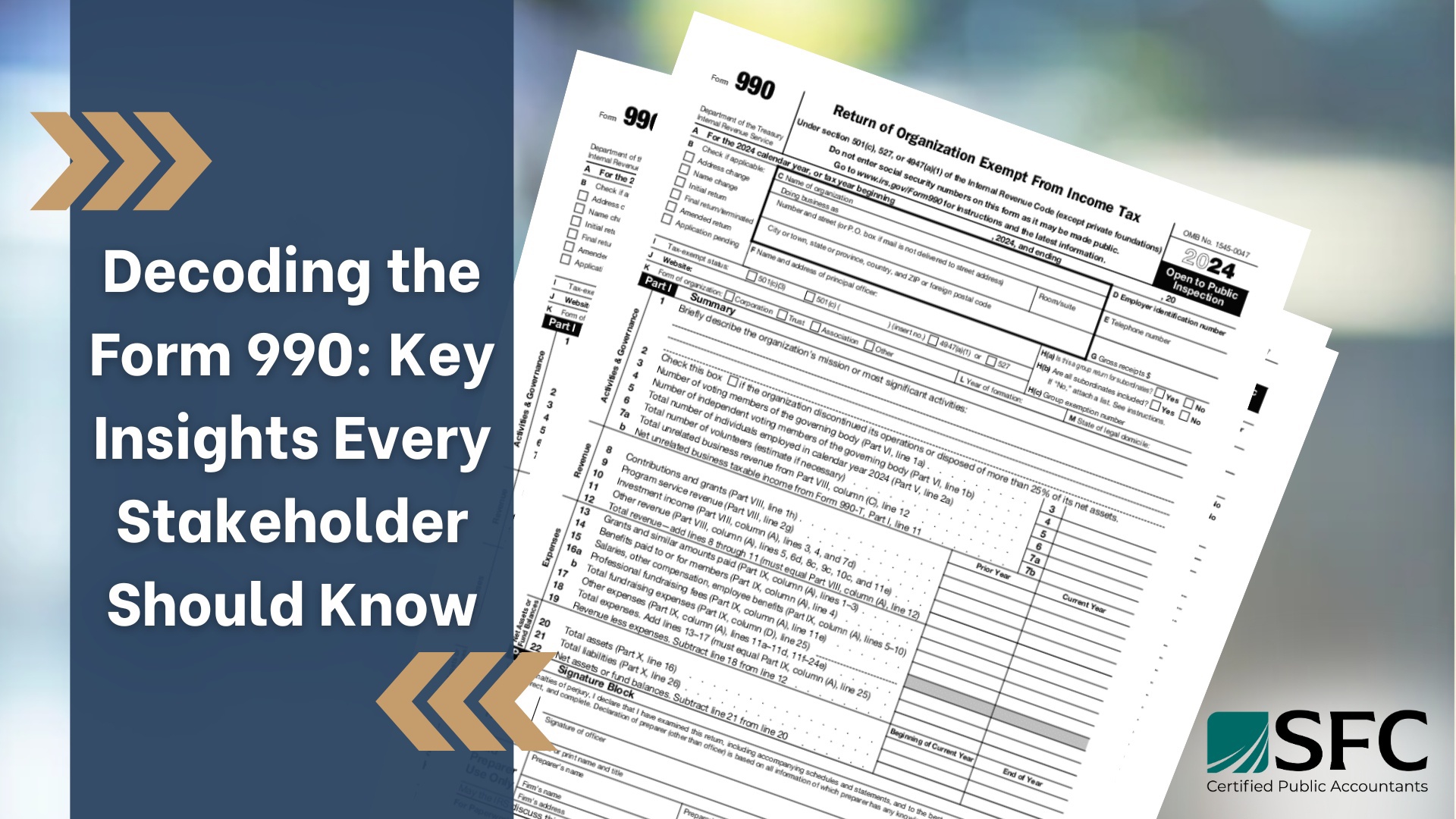
The Form 990 is often called an “informational return,” but for nonprofits it’s much more than just a tax filing. This document is a window into a nonprofit’s financial health, governance practices, and mission impact. Donors, board members, staff, and even regulators use the Form 990 to assess accountability and effectiveness.
If you want to better understand how a nonprofit operates, here are seven key areas to review when analyzing a Form 990:
1. Mission Statement & Accomplishments (Page 2)
Ever wondered what a nonprofit actually does? While websites and brochures may highlight their work, Page 2 outlines the organization’s mission and lists specific accomplishments from the year—such as people served, grants awarded, or meals distributed. This section also reports spending for each program, giving readers a transparent look at how resources are tied to mission impact.
2. Revenue Breakdown (Page 9)
Funding sources reveal a lot about sustainability. On Page 9, you’ll see whether revenue comes mainly from contributions, program fees, grants, investments, or fundraising events. The mix of revenue streams shows whether the organization relies heavily on a few donors or has a diverse base of support—an important indicator of financial resilience.
3. Expense Allocation (Page 10)
We’ve all heard nonprofits say, “Most of our dollars go directly to programs.” The Form 990 shows the real breakdown, with expenses split into program services, management & general, and fundraising. While lean administration can be a positive sign, it’s not the full story—high overhead may reflect investments in infrastructure, leadership, or compliance. Use these numbers as a conversation starter, not a sole judgment.
4. Executive Compensation (Page 7 & Schedule J)
Compensation disclosures give insight into governance and stewardship. The 990 lists salaries for top executives, and while excessive pay can raise red flags, competitive compensation is often essential for retaining strong leadership. Comparing figures to industry benchmarks can help determine whether salaries are fair and aligned with the organization’s size and scope.
5. Balance Sheet (Page 11)
A nonprofit’s balance sheet tells a story about its financial stability. If liabilities outweigh assets, the organization could be facing challenges. On the other hand, unusually high unrestricted assets may suggest missed opportunities to invest more directly in mission-related work. Reviewing this page offers clues about strategic priorities and sustainability.
6. Related Party Transactions (Schedule L)
Transparency matters when it comes to conflicts of interest. Schedule L discloses transactions between the nonprofit and board members, officers, or related businesses. Many are legitimate and properly approved, but it’s worth reviewing to ensure decisions are mission-driven and free from self-dealing.
7. Public Support Test (Schedule A)
For public charities, tax-exempt status depends on passing the public support test. Generally, at least one-third of revenue must come from the public rather than a small group of donors. Falling short can signal potential risks, such as overreliance on a few funders or vulnerability to sudden funding changes.
Final Thoughts
The Form 990 is more than compliance—it’s a roadmap of a nonprofit’s accountability, financial health, and mission impact. Whether you’re a potential donor, a new board member, or part of the nonprofit’s leadership, learning how to read the 990 equips you to make informed decisions and strengthen trust in the sector.

